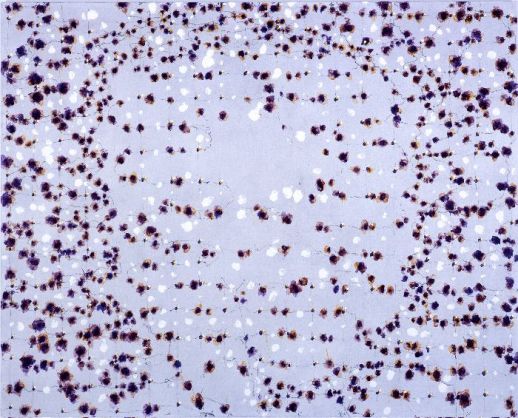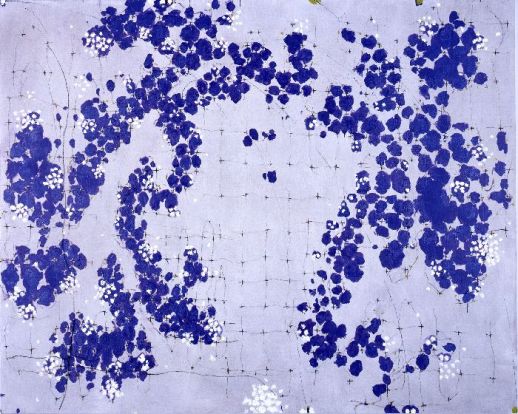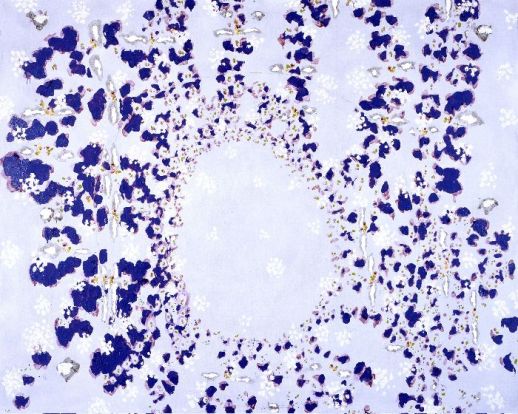Spring Circles
For the collection “Behind, Circle,” painter Natsuyuki Nakanishi works in the colors of hydrangeas and new leaves. The canvases on display at SCAI The Bathhouse are, at first glance, an abstract image of spring. Upon meditation, they reveal a certain curious tension.
Five years have passed since Nakanishi’s last solo exhibition at SCAI The Bathhouse and all of the works being presented there now are new and on display for the first time. The veteran artist has apparently been doing a lot of thinking about form and space during this interval. This collection can be seen as a visualization of those musings.

The abstract paintings, six large canvases and a handful of small, denser ones, are loosely similar. Each work features applications of color (those pleasing natural ones described above) that appear both isolated and irrevocably connected. In some, the vaguely flower-like forms are arranged in thick rings that seem to be simultaneously drawn to the center and repelled outward by centrifugal force. In others they appear as nodes on a lightly rendered, net-like grid. With each, there is roughly an equal amount of lively color on the surface and the shadowy dove-grey that forms the background.
Taken as a whole, the collection depicts a kind of organization and dispersion – or concentration and release – of forms (thoughts?) across space. The works command a subtle ability to draw in the viewer, demanding attention to both what is pictured and what is left “empty.” However they are also subtle, and well, pretty – not necessarily what one might expect from an artist heavily associated with the 1960s avant-garde.

Visitors may remember Nakanishi’s installation at last year’s Yokohama Triennale, as the works displayed at the NYK Waterfront Warehouse were not dissimilar in style. “Behind, Circle” at SCAI The Bathhouse is, however, a different entity entirely. The cool white walls of this particular gallery, combined with the shitamachi quietness and actual spring outside, do the paintings a notable justice. The effect is so as to make the exhibition both an inspiring subject and the setting for an afternoon contemplation of aesthetics.

Rebecca Milner
Rebecca Milner



